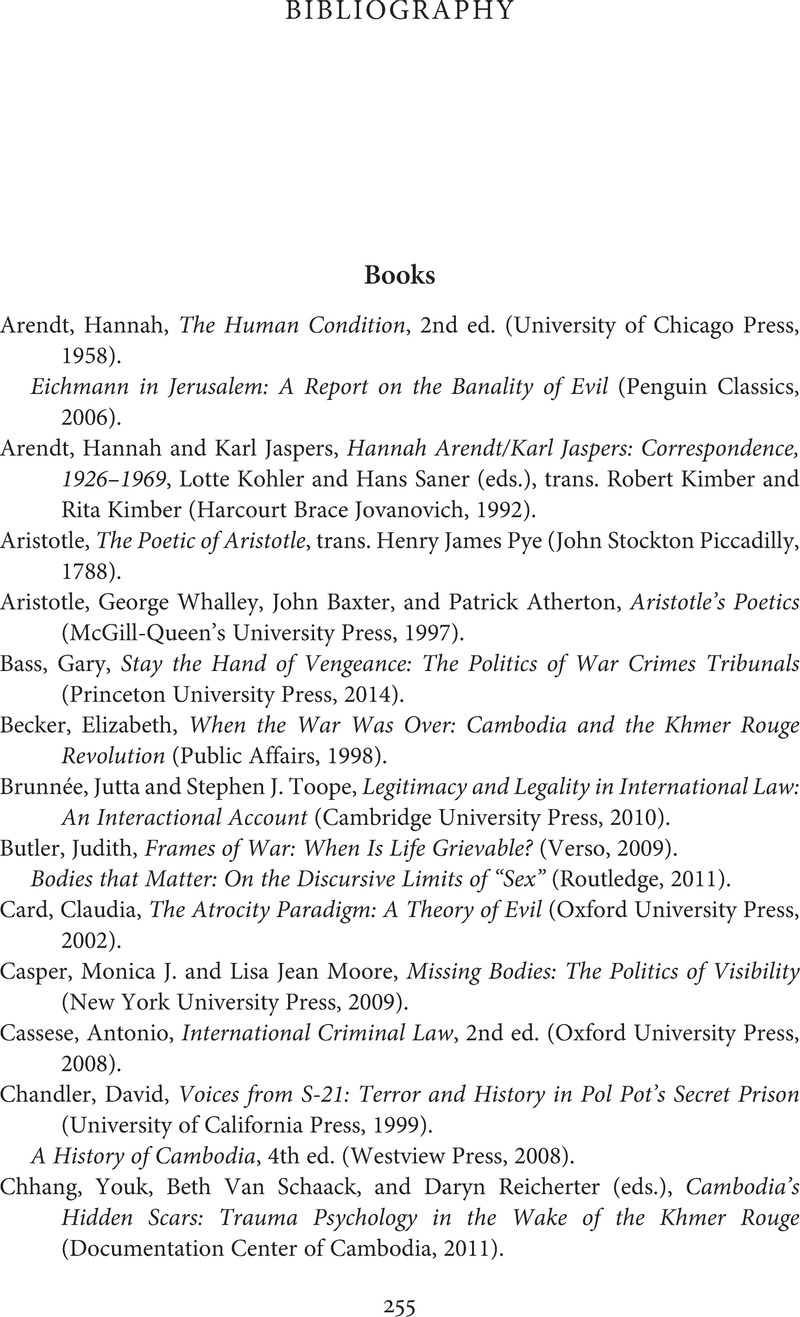Book contents
- Invisible Atrocities
- Invisible Atrocities
- Copyright page
- Contents
- Acknowledgments
- 1 Introduction
- 2 The Atrocity Aesthetic
- 3 Maintaining Invisibility
- 4 Unspectacular Atrocities and International Criminal Law
- 5 Visible and Invisible International Crimes
- 6 The Costs of Invisibility
- 7 Aesthetic Bias and Legal Legitimacy
- 8 Conclusion
- Bibliography
- Index
- References
Bibliography
Published online by Cambridge University Press: 10 March 2022
- Invisible Atrocities
- Invisible Atrocities
- Copyright page
- Contents
- Acknowledgments
- 1 Introduction
- 2 The Atrocity Aesthetic
- 3 Maintaining Invisibility
- 4 Unspectacular Atrocities and International Criminal Law
- 5 Visible and Invisible International Crimes
- 6 The Costs of Invisibility
- 7 Aesthetic Bias and Legal Legitimacy
- 8 Conclusion
- Bibliography
- Index
- References
Summary

- Type
- Chapter
- Information
- Invisible AtrocitiesThe Aesthetic Biases of International Criminal Justice, pp. 255 - 284Publisher: Cambridge University PressPrint publication year: 2022



